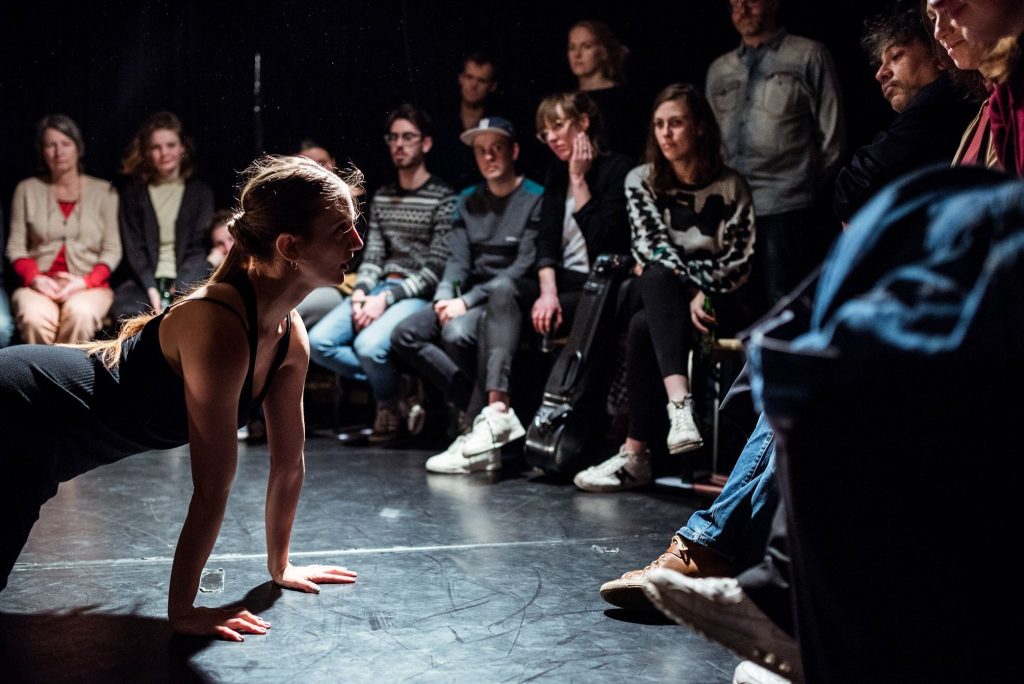
This review was published in art magazine rekto:verso, in a slightly modified version
Lees de Nederlandse versie van deze recensie hier
Review of the audience at Seven Years by Teddy shouldn’t smoke – as seen on 13 april 2017 at WORM/UBIK in Rotterdam
Although unique audience setups are slowly becoming mainstream, some people just can’t seem to get used to it – even in the underground. Seven Years’ audience explores this conservative attitude with a movement performance piece highlighting certain archetypes.
Upon entering the black box of avant-garde centre WORM in Rotterdam, horrified faces can immediately be seen: the audience is not allowed to sit on a tribune. On stage, chairs are arranged in a square around a dancer. Those taking their seats are brightly lit by a footlight. Anonymity is not a possibility here: every member of the audience becomes a co-actor or part of the décor. Nearly everyone reacts to the setting by sitting hunched over from the start, arms crossed, sometimes their closed off posture accentuated by a coat or bag on their lap.
An individual experience
Some resign themselves to their roles as set pieces and stay in the same position for three quarters of an hour, while others carry the dramatic flow by moving through different postures. It’s clear that watching the dancer is not a collective affair, but an individual experience. That interpretation is particularly embodied by a woman in a corner, who from the beginning moves along to the music, seemingly putting on her own party. The restrained attitude of the audience members around her enhances her presence.
The Gaze
As the piece progresses, The Gaze becomes more and more the main subject. The distinction between male and female gaze lapses: everyone, male and female, turns the dancer into an object by looking – until she looks back.
When that happens, the set pieces avert their gaze in terror, or look for another way to avoid reacting. Only the woman in the corner smiles broadly at the dancer, even seems to want to raise her thumb for a moment.
Called back to order
Once people seem used to the risk of eye contact with the dancer, a bright light suddenly comes on. One girl lets out a nervous giggle, and, after a quick and sharp glance from another, hunches over even further.
The woman in the corner starts to make slightly smaller movements. For a brief moment, she finds the gaze of someone across the stage making the same movements, tries to exchange an understanding smile. Together they maintain their fragile pas de deux of looking and looking away for a while longer, but eventually they are called back to order by the stares of other audience members. Both switch to set piece mode, like the rest, until the moment comes when they are allowed to jump up for applause.
Our verdict
It’s certainly fascinating to see how moving a few chairs can cause so many personal dilemmas. What does it mean to watch, and to be watched? Is it a power game, which the audience is slowly losing?
Perhaps a tribune is the last remaining space in this age where we can just look around, without having to be concerned with how the others see us. Is that why it’s so hard to let go of old theatre conventions?
This audience receives three out of five stars.*
*We give three stars to all audiences, because a three-star review tells nothing about an artwork.
